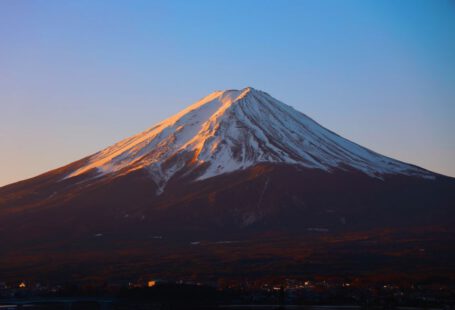Japan, a country known for its rich culture, technological advancements, and breathtaking landscapes, is also home to diverse and unique climates. Located in the northeastern part of Asia, Japan experiences a range of weather patterns throughout the year, making it an intriguing destination for travelers and climate enthusiasts alike.
One of the major factors that contribute to the diverse climate in Japan is its geographical location. Stretching from north to south, the country encompasses a wide range of latitudes, resulting in distinct climatic zones. From the subarctic region in the north to the subtropical region in the south, each area has its own weather characteristics and seasonal changes.
Starting from the northernmost island of Hokkaido, the climate here can be described as cold and snowy. With long and harsh winters, Hokkaido experiences heavy snowfall, creating a winter wonderland for skiing enthusiasts. Summers, on the other hand, are relatively mild and pleasant, offering a reprieve from the cold and a chance to explore the beautiful landscapes that this region has to offer.
Moving southwards, we find the Tohoku region, which experiences a similar climate to Hokkaido but with slightly milder winters. Here, snowfall is still abundant, making it a popular destination for winter sports lovers. Spring and autumn are particularly delightful in Tohoku, as cherry blossoms and vibrant foliage paint the landscapes in a riot of colors.
Continuing south, we reach the Kanto region, home to Tokyo, the bustling capital city of Japan. The climate here can be described as humid subtropical, with hot and humid summers and mild winters. Tokyo experiences distinct four seasons, with cherry blossoms in spring and colorful autumn foliage being particularly enchanting.
Further south, we enter the Chubu region, which is known for its picturesque landscapes and iconic Mount Fuji. The climate in this region is generally mild, with hot summers and cold winters. The Japanese Alps, located in Chubu, receive heavy snowfall during winter, making it an ideal destination for skiing and snowboarding enthusiasts.
Moving even further down, we reach the Kansai region, which includes cities like Osaka and Kyoto. Kansai experiences a humid subtropical climate similar to Kanto, with hot and humid summers and mild winters. This region is famous for its historical sites, traditional temples, and delicious cuisine.
As we approach the southernmost part of Japan, we enter the Kyushu region. Known for its volcanic landscapes and hot springs, Kyushu experiences a mild and subtropical climate. Summers here can be hot and humid, while winters are generally mild. The region is also prone to typhoons during the summer months, bringing heavy rainfall and occasional strong winds.
Finally, we reach the subtropical islands of Okinawa, located in the Ryukyu archipelago. Here, the climate is classified as subtropical, with hot and humid summers and mild winters. Okinawa is a popular beach destination, with crystal-clear waters and stunning coral reefs.
In conclusion, Japan’s climate is as diverse as its cultural heritage. From the snowy landscapes of Hokkaido to the subtropical paradise of Okinawa, each region offers a unique climate and a chance to experience a different side of Japan. Whether you’re a fan of winter sports, cherry blossoms, or tropical beaches, Japan has something to offer for every climate enthusiast. So, pack your bags and get ready to explore the fascinating climates that await you in the Land of the Rising Sun.





